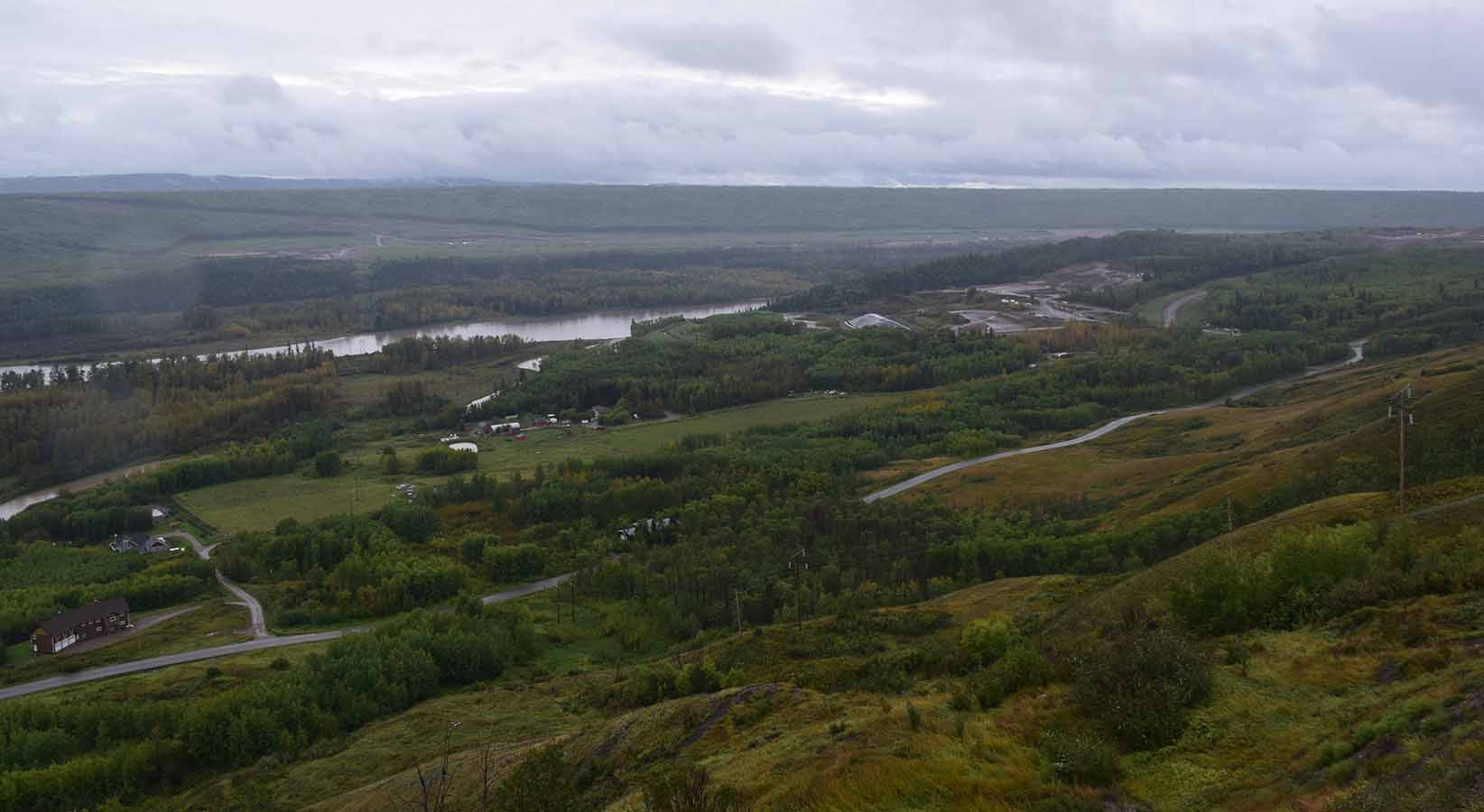Fort St. John

By Taylor Mills, Fort St. John Literacy Society
Creating Achievable Learning Goals in a Challenged Natural Resource Economy
Fort St. John (FSJ) is a beautiful city located in Northern British Columbia. Known for its landscapes, mountain peaks and rivers, Fort St. John draws many tourists worldwide.
The economy also brings people from various walks of life, looking to take advantage of the thriving oil and gas industry. At one time, the opportunities were endless and allowed for families to grow and build happy and successful lives. The people here are kind, caring and welcoming, noticed especially when we come together to help a person or group of people in need. In Fort St. John there is an excellent sense of a collectivist attitude; there is always someone willing to help, as long as you are ready to ask.
Impact of COVID- 19
During these new times, COVID-19 has caused the economy to steadily decrease over the past six months. The decline has affected the job availability in this region and impacted the overall sense of community. This is now replaced by the desire to help oneself due to unforeseen circumstances. Most jobs were shut down unless you were considered to be an “essential” service. This left some people feeling defeated and let down by the government. Others who were told to continue working were torn between wanting to collect benefits to be home with their families and working due to society’s needs. During this pandemic, Alaska Highway News released an article detailing the 12,000 jobs lost due to closures in Northern British Columbia. Compared to other parts of the country, this is minimal.
Our resource sectors such as oil and gas, forestry and agriculture are required globally. While this was a positive for the region, before the pandemic the Peace Region suffered from mill closures, and employment in the construction industry decreased by 31% when Site C and LNG no longer required construction services. With job losses in other sectors too, individuals without employment felt helpless. Trying to understand where the needs were to help individuals, we at the Fort St. John Literacy Society decided to take part in the Displaced Workers Survey. Our goal was to see what was needed in our community and offer supports.
The author’s perspective
Specifically, my role in this society is to help support individuals with literacy needs through a variety of domains, which include writing, math, job application and training (understanding the materials) and mental health literacy, to name a few. Moreover, my department is in charge of fundraising events aimed to bring community members together. These events include the Spelling Bee, 5k Run and the New Years’ Eve Bash. The events and services offered are provided to help support, bring people together and bring in funding to support our vulnerable populations. Within this research project, especially during the pandemic, my roles have changed slightly because I cannot provide face-to-face support; I can assist people virtually or electronically to focus on goals that will aid them mentally and financially. More specifically, I can help people feel a sense of ease by creating realistic expectations that are achievable while also offering services to help achieve their goals. Our society and the case study are grounded in this place by providing individuals with a stable environment to express their concerns and make plans. While responses were low for the interviews, clients’ need for help and support were not. Clients felt safe to speak with individuals in our society and knew they would and will continue to be supported. There have been some highs and lows on this journey with various community members. These experiences give a glimpse into the new normal of Fort St. John.
Lower income families affected most
Throughout the pandemic, it has been evident that families and people of lower socioeconomic status are affected the most. With the closure of schools and daycares, single-parent families had to stop work to take care of their children. For these individuals, it was a blessing and a curse. After speaking to many families, I learned that in the beginning stages of staying home with their children, it was exciting to be creating new memories and having more time to bond. However, this was quickly taken over by fear. The fear came of the uncertainty of re-employment when restrictions lifted, accounting for the taxes on the government funds provided to those without work, and the additional work of homeschooling. These fears led to depression and anxiety, stressful home lives for both parents and children and an overwhelming sense of hopelessness.
Furthermore, these feelings and fears seemed to be higher with individuals considered to be part of the lower socioeconomic status. It was evident that mental health, combined with financial instability, would be the two main factors these two vulnerable groups would face. Families started to feel isolated and alone due to a lack of societal support from schools and local organizations such as the community library, daycares and other recreational facilities. Unfortunately, these facilities were under government regulations and were advised to cease operations; this left families feeling alone in a battle they believed they were destined to lose. Fort St. John’s community started to become an area where individuals were focused on the well-being of themselves and their families. These changes were not selfish but were more of a survival tactic. People did not have the resources to help others, as this would run their resources thin. Previously, when the economy was doing well, you would notice strong community involvement. The lack of a collectivist attitude seems to be temporary as we see some restrictions being lifted. During difficult times, the families who needed the most support struggle to keep their heads above water. As schools are now open, these families have the opportunity to try and get back to a “normal” without the additional stressors from lack of childcare and homeschooling responsibilities.
Community and individual impacts
How will family isolation affect young individuals’ social development? Social development occurs with consistent human interactions outside of the immediate family circle. I fear if restrictions are placed back on our community, we will see a significant decline in young individuals’ social skills. After discussing with parents from various walks of life, there is a common theme that children tend to be uncertain about how to play appropriately with others through sharing and pretend play. With an emphasis on social distancing, children view sharing as a negative, which has led to negative social interactions amongst the younger population. If this trend continues, there may be negative implications for young minds’ social development, specifically the ones who are just starting to create friendships. I am curious to see how we as a community will combat this dilemma and how long it will take our community to re-establish a normal once the fear has subsided.
Earlier in the year, we had experienced mill closures in this region that resulted in many individuals leaving town for work as there was a lack of jobs in their preferred field. Unfortunately, all individuals who disclosed information regarding their need to relocate for work declined direct quotes surrounding their decision to move but were willing to share details of their choices. Individuals affected by the mill closures felt that there was no immediate work in this region that could match the income they were receiving at the mill. With high house mortgages and schooling required to enter a career that would provide similar earnings, individuals decided to source elsewhere to avoid going into debt.
One individual that disclosed his decision to move had to sell his property to ensure he could get a leg up in his new community. They chose to move to Victoria, where the cost of living is more expensive, but job opportunities were abundant. Essentially, due to the closure, this individual felt pressure to uproot his family to create a life that was best for the whole family. Unfortunately, not long after the move, a pandemic hit the region, and this individual had to move back, unable to afford the cost of living in the Victoria region. Due to government support and resources at our local employment support office, Employment Connections, this individual is now choosing another avenue to help re-establishes his career in this region. With the continued support and the slow reopening of jobs, this individual has the opportunity to re-establish himself in his hometown.
In addition to the mill closure, pipeliners and carpenters have lost employment; these job losses were due to the slow down or completion of projects within the area. For instance, Site C and LNG started to slow down the need for certain employees due to projects slowing down or becoming completed.
With the demand for fewer employees, individuals were left reaching out to supports such as employment connections for jobs in this region. Unfortunately, there was not an abundance of work available for locals at this time, as companies sourced experts from different parts of the world. While this had frustrated some locals, others took the time to focus on continuing their education or utilizing unemployment until work became available again. With the pandemic, most individuals are using government support to get by.
The COVID-19 pandemic and the effect on the economy, and the availability of work were common themes in most individuals’ stories. While some continued looking for jobs and expanding their knowledge. While others used unemployment to get by temporarily, these solutions were immediately interrupted by work site closures as a result of the pandemic regulations. Individuals in the community were willing to find resources to help grow and expand their knowledge to acquire other employment opportunities, but unfortunately, these options were non-existent. Individuals were now forced to rely on the government for support: this caused a lack of motivation in individuals due to months without work availability. Another theme that developed was hopelessness.
Hopelessness
Hopelessness was one of the most predominant themes in conversations with people in the community. They described feelings of loneliness, overwhelming doom, a lack of support, and no opportunity to move forward. These feelings were described by individuals in lower-income families or families who have a single- parent in the household. Moreover, from these conversations, parents discussed how their children were coping. Parents have started to notice changes in behavior resulting from a lack of societal interactions. If these trends continue in this manner, I hypothesize that mental health services will see an increase in demand and a decrease in what we consider typical child interactions.
Concluding thoughts
In conclusion, increasing mental health and child supports are the next step in achieving a sense of normalcy. Parents and families have struggled the most during these times and have experienced an overwhelming amount of stress. They have taken on responsibilities that has been typically shared across various organizations. With more facilities opening up, it is essential that we start to advertise and reach out to our vulnerable clients and offer supports aimed at wellness, stress relief, relaxation, self-love and coping with mental health. Having these supports readily available and advertised across various locations will help bring back a sense of community and decrease the loneliness and helplessness we see, specifically in our vulnerable populations.
